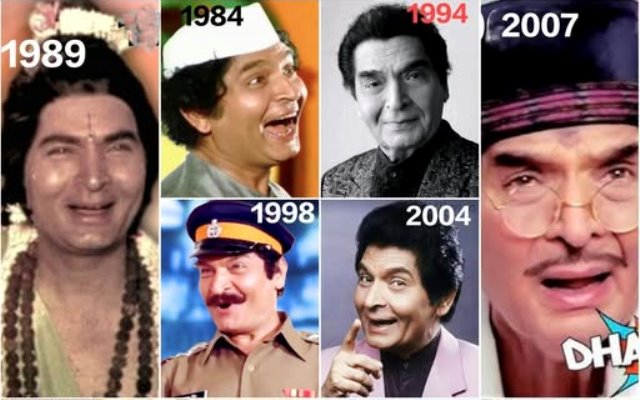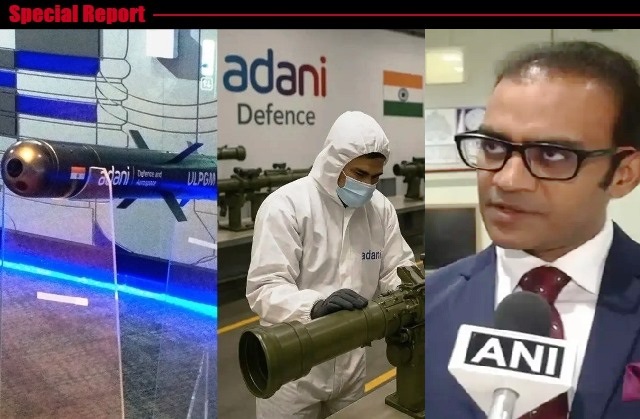
Modi 3.0 Must Focus on Jobs and Rising Inequality
In the run-up to this year’s Lok Sabha elections, Narendra Modi is estimated to have given around 80 television interviews, all of them to TV hosts who appeared so servile and obsequious that every time I watched one of those interviews I felt deeply, vicariously embarrassed. Germans have a word for it, Fremdschämen, which means to cringe because of something that others do.
Yet, pathetic as they might have shown themselves to be, those anchors, hosts and interviewers are inconsequential. What Modi said in those interviews is not. Actually, more consequential than what he said is what he didn’t say or wasn’t asked.
To be sure, sometimes he was asked. In one interview, an anchor asked him about the problem of inequality in India’s economy. It was an important question and probably the most important of all the questions he was asked in that interview. India’s economy is marked by significant inequality, which has been a persistent challenge for the country.
The Gini coefficient, a measure of income inequality where 0 represents perfect equality and 100 represents perfect inequality, was around 35.7 for India in 2019, according to the World Bank. This indicates a relatively high level of income inequality. According to an Oxfam report in 2022, the richest 1% of India’s population holds more than four times the wealth held by the bottom 70% (953 million people). This wealth concentration has been increasing over time. According to another measure by the Credit Suisse Global Wealth Report, the top 10% of Indians own 77.4% of the country’s total wealth. This is one of the highest wealth concentrations globally. Likewise, the World Inequality Lab Report 2022, led by economists including Thomas Piketty, found that the top 10% in India capture 57% of the total national income, while the bottom 50% get only 13%. In terms of wealth, it corroborates that the top 10% own around 77% of total wealth.
So what did Modi say when he was asked about the problem of inequality? His first response, and I paraphrase, was to counter the question with a question: “So should everyone be poor? There should be more rich people.” He then went on to explain how it was a process in which by and by different strata of people would get richer–an explanation whose economics is difficult to fathom. Then he went on to say how the number of startups in India had gone up from a few thousand to 1.25 lakh startups now.
Exactly how startups can alleviate inequality is something Modi left unsaid. “Progress is happening,” he said. Then he pointed to how because so many more people were travelling by air now that 1,000 new aircraft had been ordered. He said more people were flying to places of pilgrimage and more Indians were going abroad for their weddings. “If there were only five rich Indians, how could there be so many weddings of Indians abroad?”
The conversation then moved on to Modi’s “Wed in India” slogan exhorting people to hold weddings in the country and not abroad. The interviewer then cracked a silly joke; Modi laughed; and the problem of inequality was forgotten.
In case you think I am making all this up, here is a short clip (posted by the interviewer himself on X) that you can watch for yourself here.
Many, including those who make their living analysing politics and elections, believe that the BJP’s poor showing in the elections where it failed to get a majority number of seats (it got only 240 of the 543 seats) was because its focus on Hindutva, aggressive anti-Muslim speeches (some of them delivered by the party’s star campaigner, Modi), and his promises (“Modi Ka Guarantee”) of making India the third largest economy in the world and a developed nation by 2047 didn’t resonate with the average Indian voter. Instead, after 10 years of the Modi regime, many felt that their lives had not improved significantly.
The Vexing Problem of Unemployed Youth
The biggest reason for inequality and voters’ disillusionment with the Modi regime is because of the huge problem of unemployment in India. Getting accurate and reliable data on unemployment in India can be challenging due to the large informal sector and varying definitions of employment.
According to the Centre for Monitoring Indian Economy (CMIE), which conducts monthly surveys, the unemployment rate in India hovered around 7-8% in 2022 and early 2023. However, these figures are often debated due to methodological differences with government surveys.
The situation is more concerning for the youth. A report by the International Labour Organization (ILO) in 2022 estimated that youth unemployment (ages 15-24) in India was around 20-25%. This is significantly higher than the overall unemployment rate. Some economists estimated the figure to be even higher than 25%.
The problem is particularly acute among educated youth. A study by Azim Premji University in 2019 found that unemployment rates were higher for those with higher education levels. For instance, graduates faced an unemployment rate of around 15-20%, while postgraduates faced around 20-25%.
COVID-19 may have made things worse. The pandemic exacerbated unemployment, especially in the informal sector and among youth. The recovery has been gradual, and many young people have faced job losses or reduced working hours.
Will Modi 3.0 Focus on Jobs?
In the interview that I referred to earlier, Modi’s response to the question on inequality seemed utterly callous. To make things worse, there was no follow up question on it from the interviewer. Instead, the discourse segued into how rich Indians go abroad for weddings. Obfuscation has been the main tactic in the BJP’s campaign during this year’s elections.
Modi, who was the main campaigner for the BJP, addressed countless public rallies. While his impassioned speeches included diatribes and ridicule against his rivals (particularly the Congress, which won only 99 seats eventually but still remains Modi’s bête noire); thinly veiled allegations against minorities; and lofty promises for a futuristic 1000-year plan for India, there was hardly any mention of what his government would be doing to ensure employment generation.
It is true that during his two terms as the Prime Minister, on the economic front, his government has made some significant achievements. It implemented the Goods and Services Tax (GST) in 2017, which unified various indirect taxes into a single tax, simplifying the tax structure and potentially boosting economic efficiency. During his regime, India’s rank in World Bank’s Ease of Doing Business Index jumped from 142 in 2014 to 63 in 2020, attracting more foreign investment.
The government also launched financial inclusion initiatives like Jan Dhan Yojana, providing millions of previously unbanked Indians with access to bank accounts, insurance, and credit.
Moreover, there was significant investment in infrastructure development, including roads, railways, and ports, which can stimulate economic growth and improve logistical efficiency. In addition, digital initiatives like Aadhaar (biometric ID) and UPI (Unified Payments Interface), were rolled out, boosting digital transactions and financial transparency.
Prominently absent, however, was a sustained and robust focus on job creation. In states such as Uttar Pradesh, where the BJP lost massively; and in Maharashtra, which was once a top Indian state and magnet for migrant workers, among other factors, rising unemployment and disillusionment may have caused voters not to vote against the BJP.
Modi in his third term will be at the helm of a coalition government, his party depending on allies for a majority in Lok Sabha–notably N. Chandrababu Naidu’s Telugu Desam Party, which won 16 seats, and Nitish Kumar’s Janata Dal (United), which won 12 seats. It remains to be seens how he manages a coalition, a form of government that he has not really had to run because in his last two terms as Prime Minister, as well as his long stint as chief minister of Gujarat before that, his party has won a majority in elections.
Other unknown factors relate to how his coalition partners, especially Kumar, behave in the coming months. Kumar, for instance, is known for his frequent flip flops. He has joined and left the BJP’s alliance, the NDA, several times, and his political manoeuvring is unpredictable. We should not forget that it was Nitish Kumar who convened the INDIA, the alliance of opposition parties that was the BJP’s main challenger in the electionst winning 232 seats.
Yet, a top priority of Modi’s third term should be jobs and inequality. These are issues that have already hit his party and resulted in its poor showing at the polls. And both concern India’s huge population of youth. The average age of an Indian is 29, more than 50% of India’s population is below the age of 25, and more than 65% is below the age of 35. Making employment a top priority should be a no-brainer.
Yet, last weekend when Elon Musk, Tesla’s boss tweeted: “Congratulations @narendramodi on your victory in the world’s largest democratic elections! Looking forward to my companies doing exciting work in India”, Modi tweeted back: “Appreciate your greetings @elonmusk. The talented Indian youth, our demography, predictable policies and stable democratic polity will continue to provide the business environment for all our partners.” He may well have added: “As long as I can ensure jobs for the talented Indian youth.”
For more details visit us: https://lokmarg.com/



